I try to find a good balance between having ideas and giving myself space to work intuitively. I think one of the most difficult things to do in art is to have a good balance between these two things.
Contemporary artist and sculptor, Warre Mulder, creates playful sculptures that are largely influenced by art heritage and diverse cultures. He talks about balancing art and family life while working with ideas and intuition together in a conversation with Sonalee Tomar.
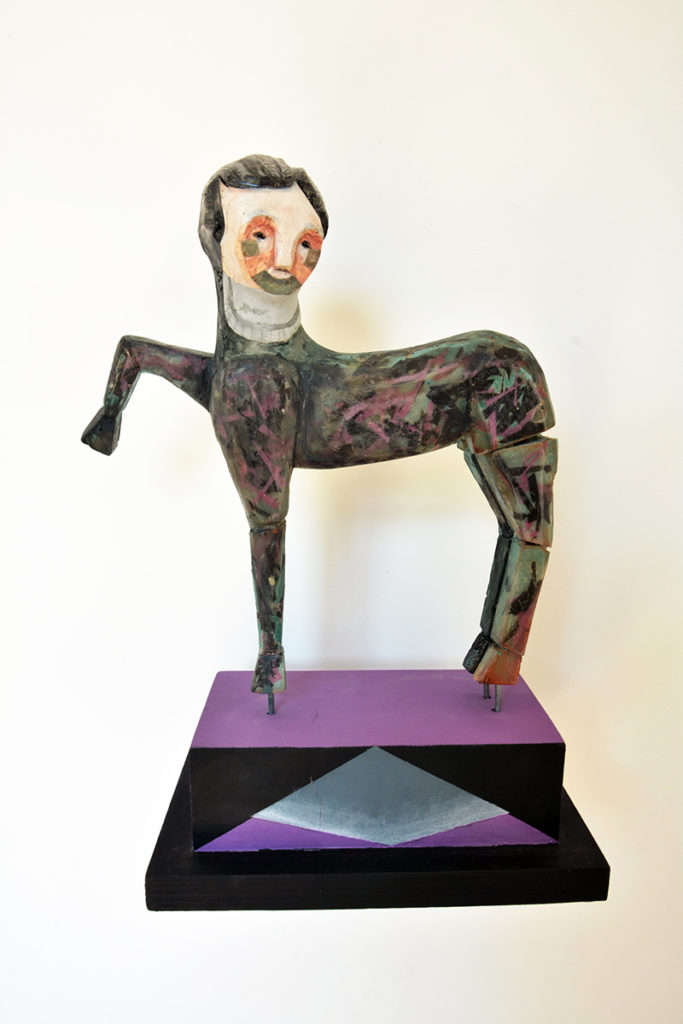
Take us to the beginning of your story. How did your tryst with art begin?
My parents met each other in an art academy near Amsterdam. They settled later in the city of Antwerp. My father is a sculptor and an all-rounder handyman (he makes stairs, furniture, etc) and my mother trained herself to be a maker of props and decor, making all kinds of stuff for television, theme parks, etc. It was no surprise that I wanted to do something within the arts. My parents have supported me since I began art education halfway into secondary school.

Acte de présence
Tell us about the evolution of your practice over the years. What were your biggest learnings and hiccups along the way? Which is the most memorable moment?
I got to work with a good gallery just after graduation. It was a very stressful time because at around the same time, I also became a father and had to work in 3 art academies to pay my bills. I was making a complex installation at the time. My gallery that gave me high hopes of an early career breakthrough decided to quit just before my first solo exhibition. Strangely enough, I only felt a sense of relief.
That’s when I decided, after some reflection, to start to have fun and do what I want to do. My work became more figurative and playful. Nobody was waiting for me at that time, but I think because of my newly claimed freedom, my work became better. After a while, came new interests.
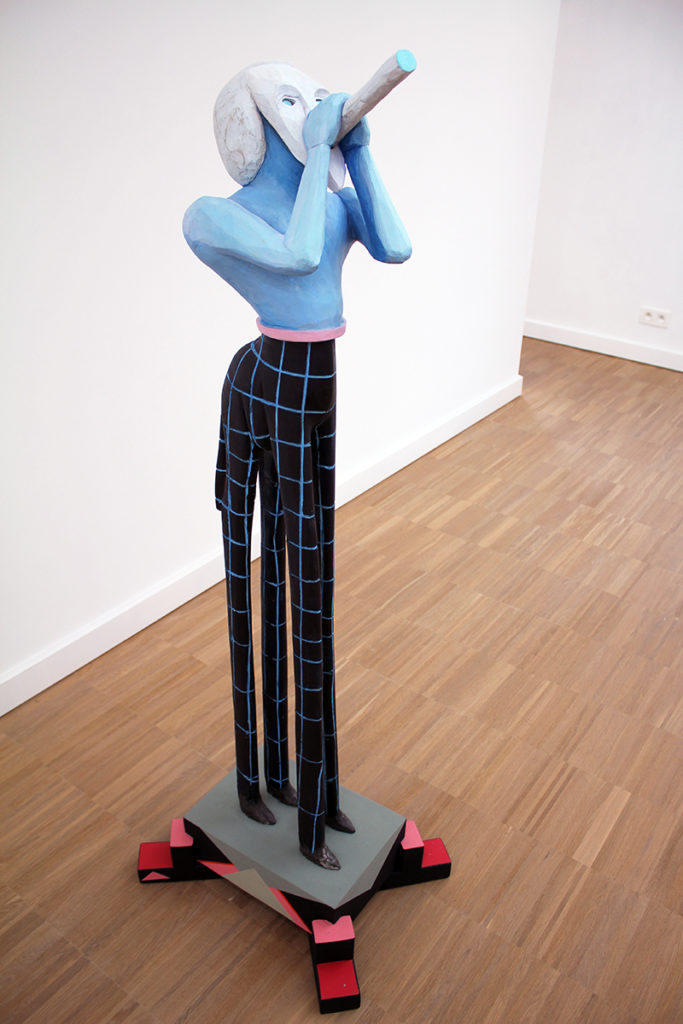
Het hoger doel medley, 2016
Tell us about your fascination with historical contexts and commitment to ethnography via art as a medium.
In my work, one can find plenty of references to art heritage. In my vision, there is no such thing as a clear cultural identity anymore which strictly follows the borders of space and time, as culture is now blurred and mingled up because of migration of people and ideas. For instance, African art traveled through the work of Picasso that in turn inspired David Hockney and so on and thus became a part of our culture. Art and culture always flourish in places where different cultures meet.
I’m inspired by both contemporary and ancient or non-European art as I feel it is all part of my culture. With these elements, I try to make a new story that fits in the time and space that surround me.
What is the primary role of an artist? How do you describe yourself in the context of challenging people’s perspectives via your work and art?
Although it is cliché, I guess we need artists to give another perspective to the world. I don’t really think it makes people think differently immediately, but it can be nourishing for an exploring mind. The mind likes to be surprised. There is no real difference in the making of or looking at art. I would not find it worth living if there was nothing to explore.
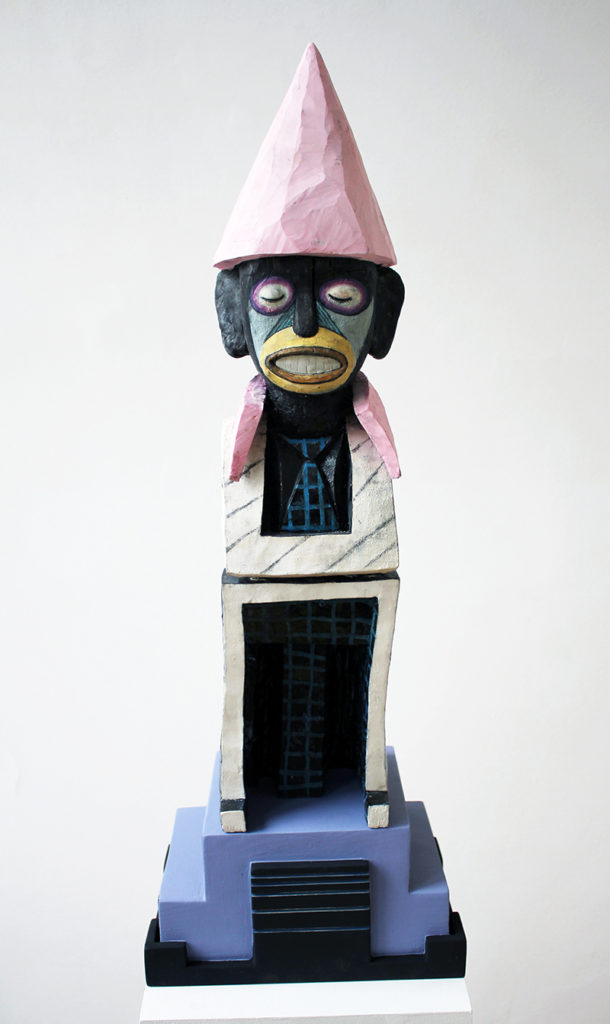
How do you balance art and life?
I have a wife and two kids. Three years ago, we moved out of the city to live in an empty school in the Dutch countryside. We were able to buy it for not too much money. After renovating it ourselves to have a living space and two studios (my wife Yasmine Willems is also an artist,) we are now able to live by just working two days a week at a regular job. I’m a teacher in an art academy where I teach sculpture and painting, and my wife works as a social worker. The rest of the days, we can spend making art and spending time with family and friends. So this way there is no real pressure of selling art. It is enough to live from, but also nothing more. If and when we sell works of art (which luckily happens,) we are able to buy new materials for making new work, buy a secondhand car if necessary or go on summer holiday.

How do you deal with the uncertainty of creating new work?
I try to find a good balance between having ideas and giving myself space to work intuitively. I think one of the most difficult things to do in art is to have a good balance between these two things. If something is too much of an idea, it can become only an illustration of the idea. Then it feels like dead work. If a certain work is only intuitive and lacks any food for thought, it can feel a bit empty. To make something that is both, I guess you can start having a great idea and then forget about it while making it, observe it again, rethink it and then get into an intuitive state again while doing it and so on. This way the mind becomes a pinball machine bouncing between mind and intuition.
Who are your maestros?
Artists that inspire my sculptural work at this moment are contemporary sculptors like Thomas Houseago, David Altmejd, Huma Bhabha, Mathew Ronay, to name a few.
I first fell in love with expressionistic paintings of artists like Nolde, Kirchner, Soutine, Van Gogh, Meidner, Beckmann. I think the biggest trigger for me is the use of colour. It does something to me that’s similar to a melody that comes together in music. In museums, I also like to go to prehistoric, ancient, or medieval art, and also non-European art. I was at the Biennale of Venice this month and found myself mostly intrigued by video art. It inspired me to make something with videos in the future. So my interest in art goes in different directions.
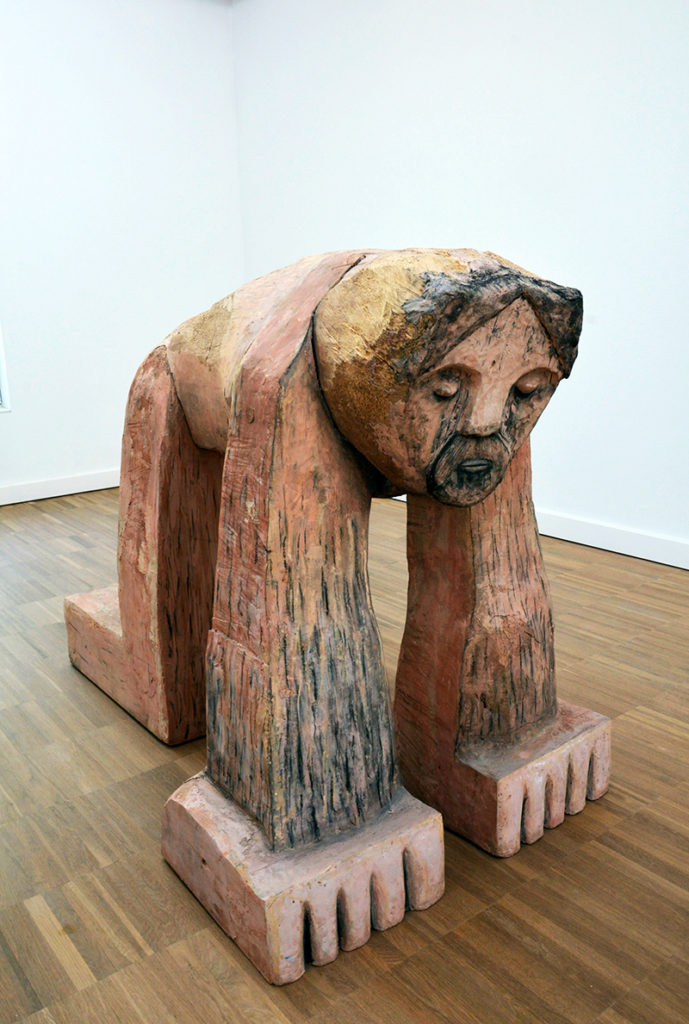
You have spent time amongst artists in flow, what have you observed?
Yes, I have. When I’m an art teacher, one of my biggest objectives is to get the students in a state of flow. This mysterious state of mind is sometimes difficult to find. I guess it happens when people get into a state of high concentration, forgetting time, and only get in contact with their material. They have to feel at ease and confident and there must be no real technical restrictions.

What is one imperative piece of advice you would give to someone who is just starting out?
To do intensely whatever they want to do. I think that real art can only occur through being honestly interested in your own work. So find out what triggers you. Get inspired by others in whom you can find a piece of your own. Be critical and show your work when you think you’re ready.
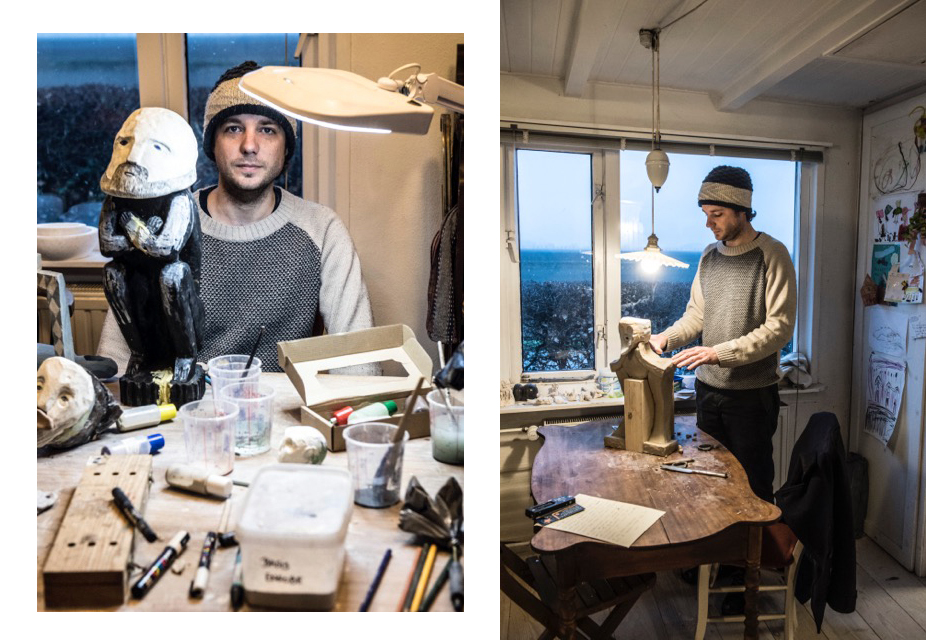
How does your interaction with a gallery evolve from the (brief) initial interface, to the working-involvement-relationship?
I’m working with two galleries at the moment – White House Gallery in Belgium and Kersgallery in the Netherlands. I think a collaboration is based on trust and understanding. It is nice when they understand what you’re doing and they give you freedom as an artist.
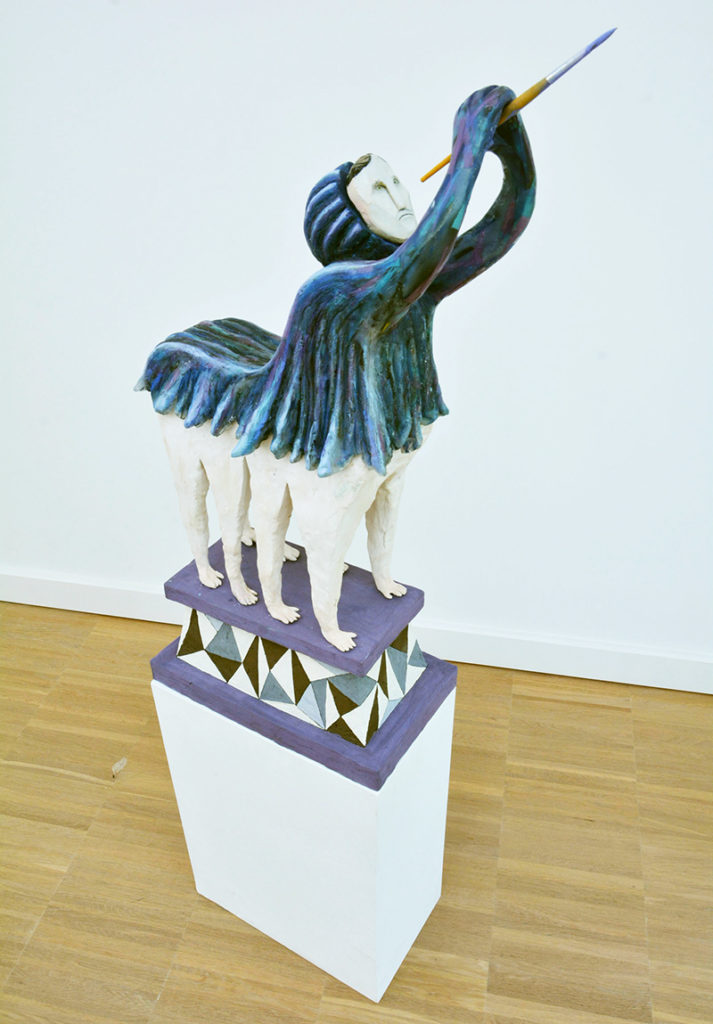
What are you working on now? What’s coming next season?
I finished renovating the house recently in May and got my new studio, so I’m just restarting and getting back into a good workflow again. I’m making several smaller sculptures that is helping me get back on track. A selection of these sculptures will be shown at Art Rotterdam, in the booth of White House Gallery.
My plan is to also make several larger pieces in the near future. I’m also fantasising about making videos. I recently bought a program which will help me with this, so I guess the time has come for me to start experimenting with this. There is also going to be a show at White House Gallery and probably at Kersgallery in 2020. There are some more projects coming up, but nothing is official yet.












Add Comment